Multiphysics phenomena in batteries
Multi-physics modelling of mechanics, transport and phase separation in lithium ion battery (LiTiO) electrodes
The physics that culminates in failure of solid state battery materials is dominated by the coupling of mechanics and mass transport. As ions are pumped in during charging or withdrawn during discharging. The intercalation of Li ions, for instance, induces deformation of the host lattice. It also can modify the elastic parameters, although this effect is less pronounced. This leads to a coupled, mechano-chemical, free energy description of the material, which can, in some cases, span multiple phase transitions. Additionally, when properly derived from the founding laws of continuum physics, the balance equations of mechanics and transport also prove to be coupled. The result of all this coupling is an intricate dynamics of interaction between mechanics and transport, which in some instances can introduce a gradual progression toward mechanical failure after many cycles of localized deformation. In this work we develop these mathematical models and the numerical methods for their solution. This is joint work with Michael Falk and Anton van der Ven.
- Publications:
- T. Jiang, S. Rudraraju, A. Roy, A. Van der Ven, K. Garikipati, M. L. Falk, ``Multi-physics simulations of lithiation-induced stress in LiTiO electrode particles'' [arXiv]
Shown here are the charge/displacement/stress contours during charge/discharge cycles of Li-ion battery electrodes with/with-out defects.
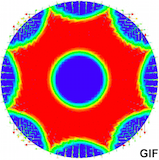
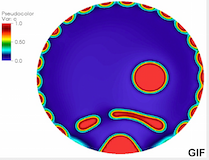
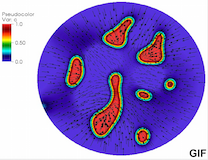
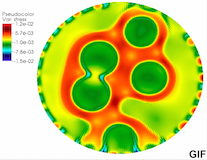
[Click images to enlarge/play]
The electro-thermo-mechano-chemistry of battery cells
Further detail can be added to the multiphysics phenomena by including the transport of charged ions in electrolytes, the electrostatic fields, the electrochemistry, heat transport and varying porosity of electrodes. Such electro-thermo-mechano-chemical models represent some of the most complex physics that encounter. The corresponding numerical formulations lead to nonlinear, and very large and stiff systems of equations with even more complex dynamics than engendered by the models described above on this page. Teasing out these dynamics is a first step to design and control of battery response.
- Publications:
- A multi-physics battery model with particle scale resolution of evolving porosity and electrolyte flow
Z. Wang and K. Garikipati
Journal of the Electrochemical Society
Vol. 165: A2421-A438, 2018, doi:10.1149/2.0141811jes
[available on arXiv] - Intercalation driven porosity effects on the electro-chemo-thermo-mechanical response in continuum models for battery material electrodes
Z. Wang, J. Siegel, K. Garikipati
Journal of the Electrochemical Society
Vol. 164: A2199-A2212, 2017, doi:10.1149/2.0081712jes
[available on arXiv]
The plots that follow depict the schematic of battery cell and some of these coupled dynamics.
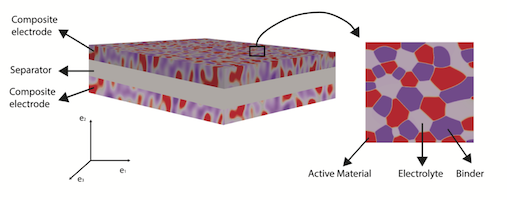
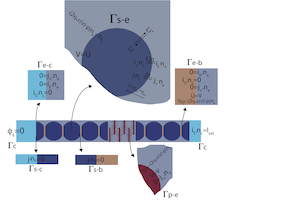
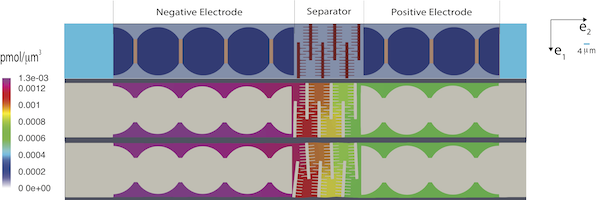
[Click images to enlarge/play]